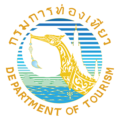Beyond Tourist Trails: Secret Spots Only Local Guides Know

While thousands of tourists flock daily to James Bond Island and the famous Hong lagoons of Phang Nga Bay, a parallel world of hidden wonders exists just beyond the well-traveled routes. These secret spots—known only to local guides with decades of experience and deep connections to the region—offer the ultimate authentic Thailand experience for adventurous travelers seeking something truly extraordinary.
For over three decades, Andaman Sea Kayak has been building relationships with local Sea Gypsy communities, mapping remote cave systems, and discovering pristine locations that don’t appear in any guidebook or tourist brochure. These hidden gems represent the real treasure of Phang Nga Bay: places where nature remains undisturbed, where cultural traditions continue unchanged, and where the silence is broken only by the whispered stories of guides who’ve spent their lives exploring these emerald waters.
This is your invitation to venture beyond the tourist trails, to discover the secret spots that transform a typical tour into an expedition of genuine discovery. But be warned—once you’ve experienced the magic of these hidden places, ordinary tourism will never satisfy you again.

The Art of Secret Spot Discovery
What Makes a Spot Truly Secret?
Not all “hidden” locations are created equal. True secret spots share several characteristics that distinguish them from merely less-visited tourist attractions:
Accessibility Barriers:
- Require specific tidal timing for safe access
- Demand expert navigation through complex cave systems
- Need local knowledge of seasonal wildlife patterns
- Involve challenging physical access that deters casual visitors
Cultural Sensitivity:
- Hold spiritual significance for local communities
- Require permission or blessing from village elders
- Demand understanding of proper behavioral protocols
- Need guides who can facilitate respectful cultural exchange
Environmental Fragility:
- Support rare ecosystems that can’t handle large groups
- Contain archaeological sites requiring careful protection
- House breeding grounds for endangered species
- Feature geological formations vulnerable to damage
The Guide’s Knowledge Network
Local guides like those at Andaman Sea Kayak don’t discover secret spots through online research or tourist maps. Their knowledge comes from:
Generational Learning:
- Stories passed down from fathers and grandfathers who fished these waters
- Traditional navigation techniques using natural landmarks
- Understanding of seasonal changes and natural cycles
- Respect for cultural boundaries and sacred sites
Community Relationships:
- Trust built over decades with Sea Gypsy elders
- Participation in local festivals and ceremonies
- Economic partnerships that benefit local families
- Language skills in local dialects beyond standard Thai
Years of Exploration:
- Personal mapping of cave systems and tidal patterns
- Documentation of wildlife behavior and breeding cycles
- Discovery through patient observation and careful exploration
- Willingness to spend years earning access to special places

The Hidden Hong: Lagoons That Time Forgot
Tham Hong Nakha: The Dragon’s Secret Chamber
Deep within the karst complex of Koh Hong lies a lagoon system so remote and challenging to access that fewer than 100 Western tourists have ever seen it. Tham Hong Nakha, named for the serpentine cave passage that guards its entrance, requires perfect timing, expert guidance, and considerable courage to reach.
The Approach: The entrance appears as nothing more than a crack in the limestone, barely wide enough for a single kayak. During high tide, it’s completely submerged. During low tide, the water is too shallow for passage. The window of opportunity lasts exactly 47 minutes during mid-tide—a timing known only to guides who’ve studied this specific location for years.
What Awaits Inside:
- A cathedral-sized lagoon with 120-meter walls
- Ancient stalactites that have never been photographed for publication
- A population of endemic fish species found nowhere else on earth
- Cave paintings estimated to be over 5,000 years old
- Complete silence except for the sound of your own breathing
Why It Remains Secret: Most tour operators avoid Tham Hong Nakha because of the precise timing required and the liability concerns of navigating such a challenging entrance. It takes a guide with intimate knowledge of the specific tidal patterns and complete confidence in their ability to safely extract guests before the tide changes.
The Floating Forest: Mangrove Cathedral
Hidden within the maze of mangrove channels that connect Phang Nga Bay’s larger islands lies what local guides call the “Floating Forest”—a mangrove cathedral where ancient trees have created a natural temple that few outsiders have ever witnessed.
The Secret Location: This hidden grove can only be reached by following a specific sequence of channels that seem to lead nowhere. The route changes with the seasons as water levels fluctuate, and a single wrong turn leads to dead ends or impassable shallows. Only guides who’ve memorized the channel system over years of exploration can find the way.
The Experience:
- Towering mangrove trees over 200 years old create a natural cathedral ceiling
- Roots extend 15 meters above water level, forming intricate gothic arches
- Filtered green light creates an ethereal, otherworldly atmosphere
- Rare birds nest in the canopy, including species found nowhere else in Thailand
- The water reflects the root system, creating mirror images that blur reality
Cultural Significance: Local Sea Gypsy elders consider this grove sacred and use it for important ceremonies. Access requires not just navigation skills but cultural protocol—guides must request permission from village spirits and follow specific behavioral guidelines during visits.
Secret Beaches: Paradise Without Footprints
The Archaeologist’s Beach
On an unnamed island accessible only during specific tide and weather conditions lies a beach that serves as an active archaeological site. Here, erosion has exposed layers of human occupation dating back over 3,000 years, creating a natural museum that tells the story of ancient maritime peoples.
What Makes It Special:
- Shell middens containing artifacts from prehistoric Sea Gypsy ancestors
- Pottery fragments showing trade connections across Southeast Asia
- Stone tools crafted from local limestone
- Burial sites that provide insights into ancient spiritual practices
- Organic remains preserved in alkaline sand
Why It’s Protected: Thai archaeological authorities restrict access to protect ongoing research. Only licensed guides working with approved research projects can bring visitors to this site, and only during seasons when archaeological work isn’t active.
The Experience: Under supervision of knowledgeable guides, visitors can observe (but not touch) artifacts as they emerge from eroding shoreline. The experience provides direct connection to the region’s human history while emphasizing the importance of archaeological preservation.
Sunset Beach: The Navigator’s Secret
Hidden on the western shore of an island that appears on no tourist maps lies a beach that local navigators have used for centuries as a sunset observation point. This location offers the most spectacular sunset views in Phang Nga Bay, but reaching it requires expert knowledge of hidden channels and seasonal access patterns.
Navigation Challenges:
- Approach channels shift with seasonal sediment patterns
- Rocky reefs require precise navigation during tide changes
- Weather conditions must be perfect for safe landing
- Return journey must be timed with tide and wind patterns
The Reward:
- Unobstructed 180-degree sunset views across the Andaman Sea
- Complete solitude—no other boats or tourists
- Ancient meditation caves used by Buddhist hermits
- Natural rock formations that frame the setting sun perfectly
- Opportunity for night kayaking under star-filled skies
Living Culture: Communities Beyond Tourism
The Pearl Diver’s Village
On a remote island inhabited by fewer than 30 people lives the last community of traditional pearl divers in Phang Nga Bay. These Sea Gypsy families maintain ancient diving techniques and cultural practices that have remained unchanged for centuries.
Traditional Practices Still Alive:
- Free-diving techniques passed down through generations
- Boat-building using traditional tools and methods
- Spiritual ceremonies honoring sea spirits before diving
- Ancient knowledge of pearl oyster behavior and habitats
- Traditional medicine using marine plants and minerals
Cultural Exchange Opportunities:
- Learning traditional rope-making from coconut fiber
- Participating in boat blessing ceremonies
- Watching master boat builders craft traditional vessels
- Hearing legends and stories preserved in oral tradition
- Understanding sustainable fishing practices developed over centuries
Why Few Tourists Visit: The community isn’t set up for tourism infrastructure and maintains its privacy by choice. Only guides with personal relationships and cultural understanding can facilitate respectful visits that benefit the community while preserving their traditional lifestyle.
The Floating Monastery
Hidden among the mangrove channels lies a small Buddhist monastery built entirely on stilts, home to monks who have chosen extreme solitude for their spiritual practice. This floating temple serves the spiritual needs of remote Sea Gypsy communities while maintaining complete separation from the modern world.
Unique Features:
- Traditional Thai architecture adapted for marine environment
- Gardens growing on floating platforms
- Library of ancient texts preserved in specially designed buildings
- Meditation halls that float with the tides
- Sustainable systems for food production and water collection
Spiritual Significance: The monastery serves as a pilgrimage destination for devout Buddhists from Sea Gypsy communities throughout the region. Visiting requires understanding of proper protocols and respectful behavior in sacred spaces.
Access Requirements:
- Permission must be requested through proper cultural channels
- Visits limited to specific times that don’t disturb monastic routines
- Appropriate dress and behavior essential
- Cultural guide required to facilitate proper interactions
Underground Wonders: Caves Beyond Imagination
The Crystal Cathedral
Deep within one of Phang Nga Bay’s largest limestone formations lies a cave system that took local guides over five years to fully explore and map. The main chamber, known locally as the Crystal Cathedral, contains formations so spectacular that geologists travel from around the world to study them.
Geological Wonders:
- Stalactites and stalagmites over 10 meters tall
- Flowstone formations that look like frozen waterfalls
- Cave pearls formed by centuries of water circulation
- Crystal formations that sparkle in headlamp light
- Underground pools of crystal-clear water
Access Challenges:
- Requires swimming through flooded passages
- Involves technical cave navigation skills
- Demands specific safety equipment and expertise
- Limited to experienced guides with cave rescue training
- Restricted to small groups to prevent damage
Why It’s Not Commercialized: The technical difficulty and safety requirements make this cave unsuitable for casual tourism. Only guides with extensive cave exploration experience and proper safety equipment can safely lead visitors through the complex passage system.
The Fossil Gallery
In a cave system accessible only during extreme low tides lies what paleontologists call the Fossil Gallery—limestone walls embedded with marine fossils from ancient seas that covered this region millions of years ago.
Prehistoric Treasures:
- Coral fossils from 280-million-year-old reefs
- Ancient shellfish preserved in perfect detail
- Trace fossils showing burrows and tracks of prehistoric creatures
- Plant fossils from tropical forests that existed before ice ages
- Shark teeth and ray spines from ancient marine predators
Scientific Significance: These fossils provide crucial evidence about climate change and evolution in Southeast Asia. Research teams occasionally visit to document new discoveries, but public access is strictly limited to protect the specimens.
The Experience: With expert guidance, visitors can observe fossils in their natural context while learning about the region’s deep geological history. The experience provides perspective on the vast timescales involved in landscape formation and the continuity of life through dramatic environmental changes.
Marine Sanctuaries: Underwater Secret Spots
The Seahorse Garden
In a sheltered bay protected by surrounding karsts lies an underwater meadow where endangered seahorses thrive in greater numbers than anywhere else in Thai waters. This marine sanctuary remains largely unknown because it requires specific diving skills and local knowledge to access safely.
Marine Life Highlights:
- Multiple seahorse species including the rare Hippocampus kuda
- Juvenile reef fish using seagrass beds as nurseries
- Rare coral species adapted to brackish water conditions
- Traditional fishing areas still used by local Sea Gypsy families
- Endangered sea turtle feeding grounds
Conservation Significance: This site represents one of the few remaining healthy seagrass ecosystems in the region. Its protection depends on maintaining low visitor numbers and following strict environmental protocols.
Access Requirements:
- Snorkeling or diving skills essential
- Environmental briefing required before entry
- Seasonal restrictions during breeding periods
- Small group sizes to minimize disturbance
- Local guide required for navigation and species identification
The Anemone City
On a remote reef accessible only during calm weather conditions lies an underwater landscape dominated by giant sea anemones hosting multiple species of clownfish and other symbiotic creatures.
Underwater Wonders:
- Giant anemones over 1 meter in diameter
- Multiple clownfish species in a single location
- Rare symbiotic relationships between anemones and other species
- Healthy coral formations in pristine condition
- Traditional fishing structures built by Sea Gypsy communities
Why It Stays Secret: The site’s exposure to open ocean swells makes it accessible only during perfect weather conditions, typically fewer than 50 days per year. This natural limitation has protected it from tourism pressure while maintaining its ecological integrity.
Seasonal Secrets: Timing-Dependent Wonders
The Firefly Forest
During specific months when weather and lunar conditions align perfectly, a hidden mangrove forest transforms into one of nature’s most spectacular light shows. Thousands of synchronous fireflies create a natural planetarium that few travelers ever witness.
The Phenomenon:
- Thousands of fireflies flash in perfect synchronization
- Light display visible only during new moon periods
- Peak activity occurs during specific months based on breeding cycles
- Complete darkness required to appreciate the full effect
- Natural rhythm creates waves of light through the forest canopy
Timing Requirements:
- Specific months: typically May-July and October-November
- New moon periods only (no artificial light interference)
- Calm weather essential for kayak access to viewing areas
- Peak viewing times: 45 minutes after complete darkness
- Seasonal variations based on rainfall and temperature patterns
Cultural Connections: Local Sea Gypsy communities have traditional stories explaining the firefly phenomenon and consider peak display nights spiritually significant. Some families make special journeys to witness the lights during their most spectacular displays.
The Nesting Islands
During certain months, remote islands in Phang Nga Bay become rookeries for rare seabirds that nest nowhere else in Thailand. Access to these islands requires perfect timing and expert knowledge of wildlife behavior to avoid disturbing critical breeding activities.
Species Highlights:
- Chinese Egrets (critically endangered globally)
- Christmas Island Frigatebirds (rare vagrant species)
- Masked Boobies (only breeding colony in Thai waters)
- Traditional species: herons, terns, and cormorants in massive numbers
- Endemic subspecies found nowhere else in Southeast Asia
Conservation Protocols:
- Viewing restricted to designated observation areas
- No landing permitted during peak nesting periods
- Silence required to avoid disrupting bird behavior
- Photography restrictions to prevent stress to breeding birds
- Expert guides essential for species identification and behavior interpretation
The Ethics of Secret Spots
Responsible Discovery
Sharing knowledge of secret spots comes with profound responsibility. Andaman Sea Kayak has developed ethical guidelines for revealing hidden locations that balance the desire to offer extraordinary experiences with the need to protect fragile environments and respect local cultures.
Protective Measures:
- Limited group sizes (maximum 6 people for most secret spots)
- Seasonal restrictions based on wildlife and weather patterns
- Cultural protocols requiring community permission and blessing
- Environmental education before visiting sensitive areas
- Long-term monitoring to assess tourism impact
Community Benefits:
- Direct employment for local guides and boat operators
- Revenue sharing with communities that grant access to traditional areas
- Support for cultural preservation and traditional skill maintenance
- Educational opportunities for community members
- Economic incentives for environmental protection
The Guide’s Dilemma
Local guides face constant pressure to reveal more secret spots to meet tourist demand for unique experiences. However, the most experienced guides understand that overexposure destroys the very qualities that make these places special.
Balancing Act:
- Protecting locations while sharing their wonder
- Maintaining community trust while serving tourist interests
- Preserving environmental integrity while generating income
- Respecting cultural boundaries while facilitating cultural exchange
- Managing tourist expectations while protecting fragile sites

Planning Your Secret Spot Adventure
Choosing the Right Guide Service
Not all tour operators have access to genuine secret spots. The difference between authentic hidden gems and merely less-visited tourist attractions lies in the guide service’s relationships, experience, and commitment to responsible tourism.
What to Look For:
- Long-term local presence: Companies with decades of regional experience
- Community relationships: Operators who employ local guides and share benefits with communities
- Small group focus: Services that prioritize quality over quantity
- Cultural sensitivity: Companies that understand and respect local customs
- Environmental commitment: Operators with documented conservation practices
Andaman Sea Kayak’s Advantages:
- Over 30 years of relationship building with local communities
- Guides who are often from local Sea Gypsy families
- Maximum group sizes of 8-10 people for most secret spot visits
- Documented partnerships with archaeological and conservation research
- Commitment to preserving site integrity through careful access management
Preparing for Secret Spot Exploration
Visiting true secret spots requires different preparation than standard tourist activities. These locations often demand more from visitors in terms of physical capability, mental flexibility, and cultural sensitivity.
Physical Preparation:
- Good swimming ability essential for many locations
- Comfort with confined spaces for cave exploration
- Basic fitness for kayaking 4-6 hours in challenging conditions
- Willingness to get muddy, wet, and occasionally uncomfortable
Mental Preparation:
- Flexibility with timing (tides and weather determine schedules)
- Patience with access procedures and cultural protocols
- Understanding that some visits may be canceled for safety or cultural reasons
- Appreciation for experiences that can’t be photographed or shared on social media
Cultural Preparation:
- Basic understanding of Thai and Sea Gypsy cultural norms
- Respect for spiritual beliefs and sacred sites
- Willingness to follow guide instructions without question
- Understanding that you’re a guest in someone else’s ancestral territory
Seasonal Considerations for Secret Spots
Different secret spots are accessible during different seasons, and the best experiences often require timing visits to coincide with specific natural or cultural events.
Dry Season (November-March):
- Optimal cave exploration conditions
- Best visibility for underwater secret spots
- Calm weather for accessing remote beaches
- Peak wildlife activity in many locations
Shoulder Seasons (April-May, October):
- Fewer crowds at accessible locations
- Optimal conditions for firefly displays
- Good weather with occasional dramatic skies
- Comfortable temperatures for physical activities
Wet Season (June-September):
- Restricted access to many secret spots
- Some locations become even more spectacular with seasonal waterfalls
- Opportunity for storm watching from protected locations
- Fewer tourists create more intimate experiences at accessible sites
The Future of Secret Spot Tourism
Balancing Revelation and Protection
As social media and travel blogs make it increasingly difficult to keep any location truly secret, the challenge becomes managing revelation rather than maintaining secrecy. The future of secret spot tourism lies in finding sustainable ways to share extraordinary experiences while protecting what makes them special.
Emerging Strategies:
- Rotating access: Limiting visits to different locations seasonally to allow recovery time
- Tiered experiences: Offering different levels of access based on visitor commitment and preparation
- Technology integration: Using apps and monitoring systems to manage visitor impact
- Community ownership: Transferring more control over access to local communities
- Education focus: Emphasizing learning and conservation over entertainment
Climate Change Impacts
Many of Phang Nga Bay’s secret spots face threats from climate change that could fundamentally alter or eliminate these unique environments within decades.
Current Threats:
- Rising sea levels affecting cave access and beach locations
- Changing weather patterns disrupting seasonal wildlife events
- Ocean acidification affecting coral reefs and marine ecosystems
- Increased storm intensity threatening fragile geological formations
- Temperature changes affecting species behavior and breeding cycles
Adaptation Strategies:
- Documentation projects to preserve knowledge of changing environments
- Alternative access routes being developed for sites affected by sea level rise
- Monitoring programs to track environmental changes
- Community education about climate adaptation
- Integration of climate science into guide training programs
Conclusion: The Privilege of Discovery
The secret spots of Phang Nga Bay represent more than just hidden tourist attractions—they are windows into authentic Thailand experiences that connect visitors directly with the natural world and local cultures in profound ways. These places offer the privilege of discovery, the excitement of exploration, and the responsibility of protection that comes with accessing truly extraordinary environments.
When you venture beyond the tourist trails with experienced local guides, you’re not just seeing different scenery—you’re participating in a tradition of exploration and cultural exchange that has shaped human understanding of this remarkable region for centuries. The Sea Gypsy guides who share their secret knowledge are offering something precious: the opportunity to experience Phang Nga Bay as their ancestors did, with wonder, respect, and deep appreciation for the intricate relationships between land, sea, and human culture.
But this privilege comes with responsibility. Every visitor to these secret spots becomes a steward of their preservation. The choices you make—from the tour operator you select to the way you behave in sensitive environments—determine whether these hidden gems will remain accessible for future generations of adventurous travelers.
The most profound secret spots are not just geographical locations—they’re states of mind that emerge when humans connect authentically with natural environments and local cultures. They represent moments when the noise of modern life fades away, replaced by the ancient rhythms of tide and wind, the whispered stories of traditional peoples, and the profound silence of places where earth reveals its deepest secrets.
For those willing to venture beyond tourist trails, to trust local guides with decades of experience, and to approach these special places with the respect they deserve, the secret spots of Phang Nga Bay offer rewards that transform casual tourists into lifelong advocates for natural preservation and cultural understanding.
The secret is not just in finding these hidden places—it’s in allowing them to find you, to change you, and to inspire you to protect the extraordinary natural and cultural heritage they represent.






